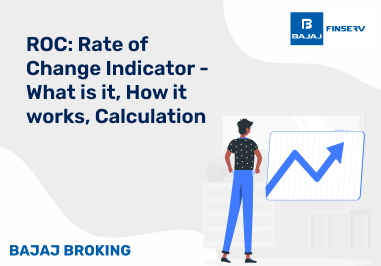If you are actively trading in the derivatives market, you already know the importance of understanding lot sizes in futures and options. The F&O stock list with lot size tells you exactly how many shares are grouped into one contract. This is not just technical information—it impacts how much money you commit and the margin you require. If you are considering entering a position in any NSE-listed F&O stock, knowing the lot size is your starting point. It helps you plan your exposure, control your risk, and meet regulatory margin requirements with clarity and precision before placing a trade.
What is the Lot Size in NSE F&O Stocks?
In the context of futures and options, lot size refers to the fixed number of shares you are required to trade per contract. Unlike the cash market, where you can buy even one share, F&O contracts are standardised. This means you cannot choose the quantity; it is predefined by NSE. If you decide to trade in Reliance or Infosys futures, you must trade the full lot size assigned to that stock. For you as a trader, understanding lot size ensures you calculate the total contract value correctly and evaluate whether you have sufficient margin before entering the position.
Where to Find the Lot Sizes of F&O Stocks?
Before you start trading in the derivatives segment, you must first confirm the lot size of the stocks or indices you want to trade. This will help you determine your exposure, capital requirement, and number of contracts to manage.
Here is where and how you can find the lot sizes:
1. Check the NSE India official website
You can visit www.nseindia.com and navigate to the derivatives section.
Search for the F&O stock list and click on the contract details to view the lot size. It is regularly updated by NSE based on market conditions and compliance norms.
2. Review your trading platform’s contract specifications
Most brokers display lot sizes on their trading terminals.
You can check under “Contract Info” or “F&O Analytics” tabs for real-time details before placing your order.
3. Refer to circulars issued by NSE
NSE publishes official circulars when lot sizes are revised.
These documents contain the effective date, the stock name, and the new lot size for each contract.
4. Use market data providers
Some legitimate Websites list F&O contracts.
These portals publish the full F&O stock list with lot size, expiry dates, and contract values.
5. Speak with your stockbroker
Your broker’s support desk can confirm contract lot sizes.
Especially useful when trading newer stocks added to the F&O segment or if you are unsure after changes.
How Stocks and Indices Qualify For F&O Segment?
Not every stock or index qualifies for derivatives trading. For a security to be included in the F&O segment, it must meet several quantitative and qualitative criteria laid down by SEBI and NSE. These ensure liquidity, transparency, and risk management for all market participants.
Here are the key qualification rules:
1. Minimum market capitalisation threshold
The stock must have a market capitalisation of at least Rs. 500 crore.
This ensures that only large and widely-traded companies are included, reducing manipulation risks in derivative trading.
2. Sufficient trading volume and liquidity
The stock must trade frequently in the cash segment.
Liquidity is important so that traders can enter and exit positions efficiently without wide price gaps.
3. High average daily deliverable value
The average daily deliverable value must be at least Rs. 10 crore.
This measure ensures there is genuine investor interest and not just speculative volume.
4. Minimum public shareholding
The stock must have at least 20 percent public shareholding.
This criterion prevents promoter-heavy stocks from entering F&O due to limited public float.
5. Satisfactory track record and regulatory compliance
The company should not have any major listing or trading violations.
Stocks under surveillance or penalty may not qualify for inclusion in the F&O list.
Conclusion
When you trade in futures and options, the lot size defines everything from your margin requirement to your profit and loss calculation. The F&O stock list with lot size is not just a reference table—it is a vital trading tool. If you want to build positions strategically, avoid margin shortfalls, or manage your risk efficiently, you must stay updated with the latest lot sizes. Also, knowing how stocks qualify for the F&O segment can help you track upcoming additions or removals. Your preparation begins before the trade—and lot size awareness is one of the most important parts.














